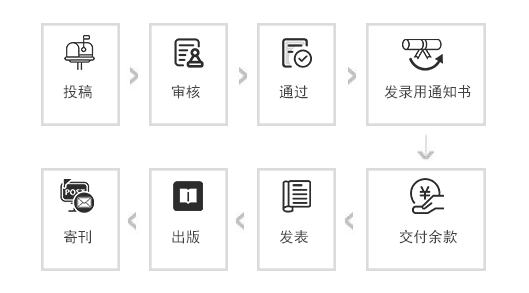ENVIRONMENTAL ETHICS



- 中国知网数据库(CNKI)全文收录期刊
- 中国核心期刊(遴选)数据库收录期刊
- 中国万方数据库全文收录期刊
- 中国维普科技期刊数据库收录期刊
- 中国龙源数据库全文收录期刊
- 中国期刊网全文收录期刊



中国高校科技期刊研究会第9次会员代表大会在北京召开,中宣部出版局副局长张怀海、教育部科学技术与信息化司一级巡视员张国辉等领导出席会议并发表..
英文简介:The field of environmental ethics concerns human beings’ ethical relationship with the natural environment. While numerous philosophers have written on this topic throughout history, environmental ethics only developed into a specific philosophical discipline in the 1970s. This emergence was no doubt due to the increasing awareness in the 1960s of the effects that technology, industry, economic expansion and population growth were having on the environment. The development of such awareness was aided by the publication of two important books at this time. Rachel Carson’s Silent Spring, first published in 1962, alerted readers to how the widespread use of chemical pesticides was posing a serious threat to public health and leading to the destruction of wildlife. Of similar significance was Paul Ehrlich’s 1968 book, The Population Bomb, which warned of the devastating effects the spiraling human population has on the planet’s resources. Of course, pollution and the depletion of natural resources have not been the only environmental concerns since that time: dwindling plant and animal biodiversity, the loss of wilderness, the degradation of ecosystems, and climate change are all part of a raft of “green” issues that have implanted themselves into both public consciousness and public policy over subsequent years. The job of environmental ethics is to outline our moral obligations in the face of such concerns. In a nutshell, the two fundamental questions that environmental ethics must address are: what duties do humans have with respect to the environment, and why? The latter question usually needs to be considered prior to the former. In order to tackle just what our obligations are, it is usually thought necessary to consider first why we have them. For example, do we have environmental obligations for the sake of human beings living in the world today, for humans living in the future, or for the sake of entities within the environment itself, irrespective of any human benefits? Different philosophers have given quite different answers to this fundamental question which, as we shall see, has led to the emergence of quite different environmental ethics.中文简介:(来自Google、百度翻译)环境伦理学研究的是人与自然环境的伦理关系。虽然历史上有很多哲学家都写过这个话题,但环境伦理学直到20世纪70年代才发展成为一门特定的哲学学科。这种出现无疑是由于1960年代人们日益认识到技术、工业、经济扩张和人口增长对环境的影响。这种意识的发展得益于当时出版的两本重要著作。雷切尔•卡森(Rachel Carson)于1962年首次出版的《寂静的春天》(Silent Spring)提醒读者,化学杀虫剂的广泛使用正对公共健康构成严重威胁,并导致野生动物遭到破坏。同样重要的是保罗•埃利希(Paul Ehrlich) 1968年的著作《人口炸弹》(The Population Bomb),该书警告称,不断增长的人口对地球资源造成了毁灭性的影响。当然,污染和自然资源的消耗没有唯一的环境问题从那时起:动植物生物多样性,减少损失的荒野,生态系统的退化和气候变化都是一系列的“绿色”问题的一部分,将自己植入公共意识和公共政策后续多年。环境伦理学的工作是概述我们面对这些问题时的道德义务。简而言之,环境伦理学必须解决的两个基本问题是:人类对环境有哪些责任?为什么?后一个问题通常需要在前一个问题之前考虑。为了明确我们的义务是什么,人们通常认为有必要首先考虑我们为什么要承担这些义务。例如,我们是否为了生活在当今世界上的人类,为了生活在未来的人类,或者为了环境本身的实体而负有环境义务,而不顾人类的任何利益?不同的哲学家对这个基本问题给出了不同的答案,正如我们将要看到的,这导致了截然不同的环境伦理学的出现。










英文简介:The field of environmental ethics concerns human beings’ ethical relationship with the natural environment. While numerous philosophers have written on this topic throughout history, environmental ethics only developed into a specific philosophical discipline in the 1970s. This emergence was no doubt due to the increasing awareness in the 1960s of the effects that technology, industry, economic expansion and population growth were having on the environment. The development of such awareness was aided by the publication of two important books at this time. Rachel Carson’s Silent Spring, first published in 1962, alerted readers to how the widespread use of chemical pesticides was posing a serious threat to public health and leading to the destruction of wildlife. Of similar significance was Paul Ehrlich’s 1968 book, The Population Bomb, which warned of the devastating effects the spiraling human population has on the planet’s resources. Of course, pollution and the depletion of natural resources have not been the only environmental concerns since that time: dwindling plant and animal biodiversity, the loss of wilderness, the degradation of ecosystems, and climate change are all part of a raft of “green” issues that have implanted themselves into both public consciousness and public policy over subsequent years. The job of environmental ethics is to outline our moral obligations in the face of such concerns. In a nutshell, the two fundamental questions that environmental ethics must address are: what duties do humans have with respect to the environment, and why? The latter question usually needs to be considered prior to the former. In order to tackle just what our obligations are, it is usually thought necessary to consider first why we have them. For example, do we have environmental obligations for the sake of human beings living in the world today, for humans living in the future, or for the sake of entities within the environment itself, irrespective of any human benefits? Different philosophers have given quite different answers to this fundamental question which, as we shall see, has led to the emergence of quite different environmental ethics.中文简介:(来自Google、百度翻译)环境伦理学研究的是人与自然环境的伦理关系。虽然历史上有很多哲学家都写过这个话题,但环境伦理学直到20世纪70年代才发展成为一门特定的哲学学科。这种出现无疑是由于1960年代人们日益认识到技术、工业、经济扩张和人口增长对环境的影响。这种意识的发展得益于当时出版的两本重要著作。雷切尔•卡森(Rachel Carson)于1962年首次出版的《寂静的春天》(Silent Spring)提醒读者,化学杀虫剂的广泛使用正对公共健康构成严重威胁,并导致野生动物遭到破坏。同样重要的是保罗•埃利希(Paul Ehrlich) 1968年的著作《人口炸弹》(The Population Bomb),该书警告称,不断增长的人口对地球资源造成了毁灭性的影响。当然,污染和自然资源的消耗没有唯一的环境问题从那时起:动植物生物多样性,减少损失的荒野,生态系统的退化和气候变化都是一系列的“绿色”问题的一部分,将自己植入公共意识和公共政策后续多年。环境伦理学的工作是概述我们面对这些问题时的道德义务。简而言之,环境伦理学必须解决的两个基本问题是:人类对环境有哪些责任?为什么?后一个问题通常需要在前一个问题之前考虑。为了明确我们的义务是什么,人们通常认为有必要首先考虑我们为什么要承担这些义务。例如,我们是否为了生活在当今世界上的人类,为了生活在未来的人类,或者为了环境本身的实体而负有环境义务,而不顾人类的任何利益?不同的哲学家对这个基本问题给出了不同的答案,正如我们将要看到的,这导致了截然不同的环境伦理学的出现。
来稿要求:
论点新颖、论证严密、论据充足、文字精练。论文字数:5000字符-8000字符为宜,图表也要计算在内,不包括英文摘要关键词。
标 题:
文章标题要言简意赅,30字以内。作者署名:署真实姓名,注明作者单位、单位所在省市和邮政编码。摘 要:要用第三人称概括全文,300字以内。
关 键 词:
用3~8个关键词术语反映论文主题。专用符号:名词、术语、数字、计量单位、标点符号和数学符号等,必须符合国家标准;外文人名、地名和术语需译成中文。
图表格式:
文中插图与表格放在相应正文之后,分别按出现顺序用图1、图2或表1、表2统一编号。插图应为黑白色,其序号、标题及注释居中放在图的下方,表格的序号及标题置于表格上方,表注放在表格的下方(建议:由于篇幅限制,除核心期刊外尽量不用或少用图表)。
正文注释:
采用尾注形式,注释号①,②,③等标在相应正文右上角。
章节体例:
章节标题为:一级标题不编号,用黑体居中排,二级标题不编号,用楷体放在相应的文字段首与正文空一字格接排正文。 三级标题分别用1.2.3.顺序编号。文中接排标题用(1),(2)编号。
参考文献:
参考文献置于正文之后,近5年的不少于3条,用[1],[2]……顺序编号,如文章中有内容需要解释请用尾注形式。参考文献不全者不能进入审稿阶段。{参考文献格式如下:(1)图书:作者.书名(版本)[M].出版所在地: 出版社,出版年:(1)页码.
(2)期刊:作者.题目[J].期刊名,年,卷(期):页码.
(3)电子参考文献:作者.题目[OL].(文章的发表日期).[本文引用日期].作者简介:来稿者请附个人简介,内容包括姓名(出生年—),性别,籍贯,民族,学历,工作单位,职称,研究方向,通讯地址,联系电话及电子信箱。
一般情况下,您将在3个工作日内收到审稿结果。如文章有很强的时效性,请说明需要最晚刊发时间。
| 论文编号 | 作者姓名 | 论文题目 | 录用情况 |
|---|---|---|---|
| TG251-13579 | 韩丽炘 孟涛 温娟娟 刘晓琴 | 基于互联网的CBL+TBL教学法在病理学实验教学中的应用 | 已录用 |
| TG251-13681 | 邹隆强 杨清余 钟鸿路 李正南 陈 | 医学运动康复联合消肿止痛方治疗急性踝关节扭伤临床研究 | 已录用 |
| TG251-13794 | 林雨慧 陈霄雯 郑颖彦 朱永凯 贾 | 基于SWOT模型的儿童专科医院临床研究发展策略分析 | 已录用 |
| TG251-13762 | 郑鸿雁 | 重复经颅磁刺激治疗肝脾不调型功能性肛门直肠痛的临床研究 | 已录用 |
| TG251-13891 | 袁召1 赵会谢2 赵海深3 | 真武汤治疗阳虚水泛型慢性心力衰竭患者的临床研究 | 已录用 |
| TG251-13536 | 王杰1 张蕾蕾2 | 血脂和载脂蛋白水平与分化型甲状腺癌及其病理学特征的相关性探究 | 已录用 |
| GD24-5203 | 单一青 高鹏慧 姚瑶 | 思维导图护理对宫颈癌患者行腹腔镜术后康复的影响 | 已录用 |
| GD24-5217 | 林秀娟 梁静文 刘美仙 陈惠贤 | 加速康复外科管理模式在胸腔镜肺段切除术患者围手术期护理中的应用效果 | 已录用 |
| GD24-5213 | 杨素雯 何洁芳 陈妙霞 廖景升 | 健康行为改变整合理论对于宫颈癌晚期放疗患者依从性及自我效能的影响 | 已录用 |
| GD24-5199 | 杨月惠 王凤婷 | 个体护理计划在心脏瓣膜置换手术围手术期患者中的应用 | 已录用 |
邮箱:cnkibianjibu@163.com
QQ:
扫码联系: